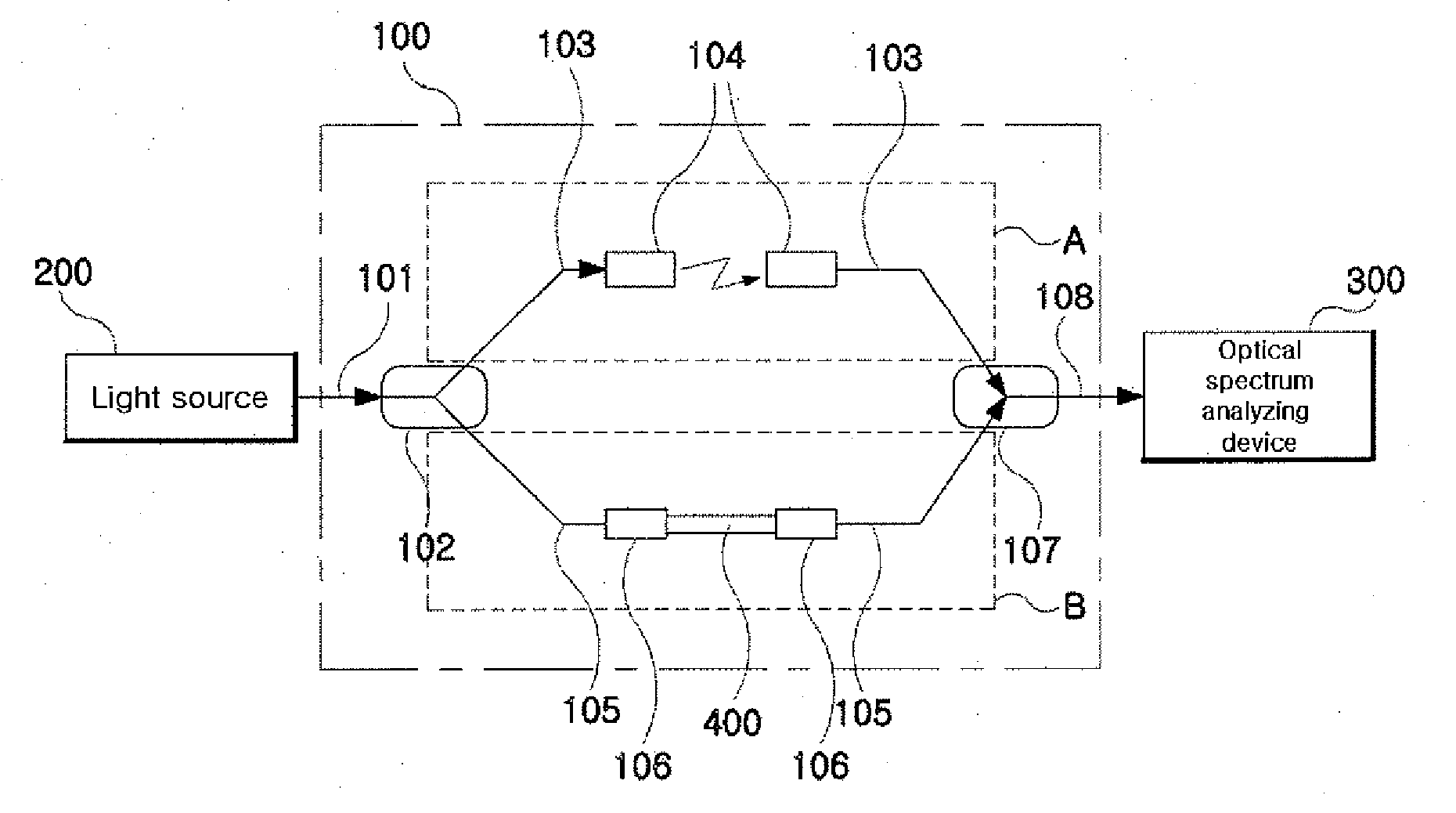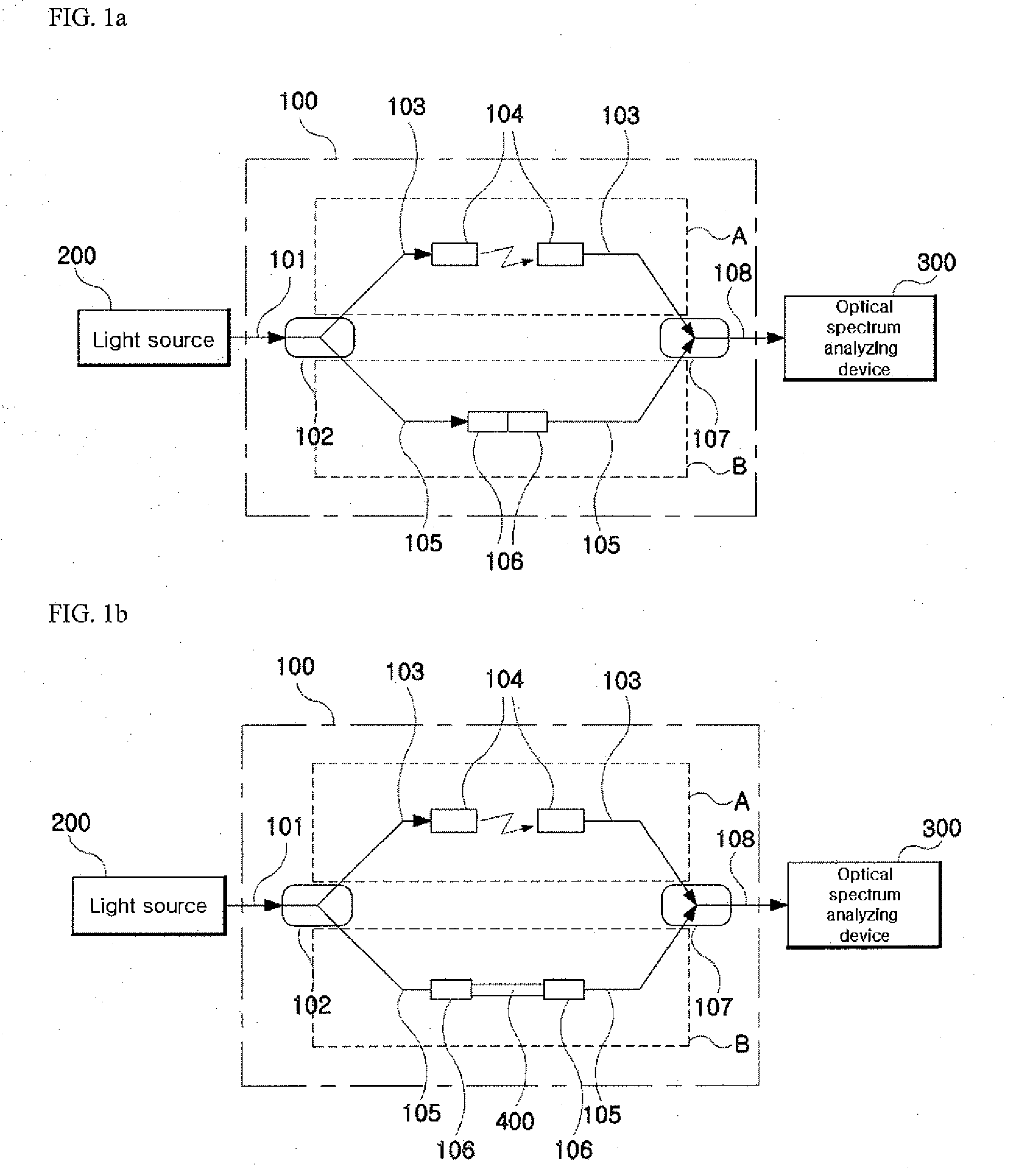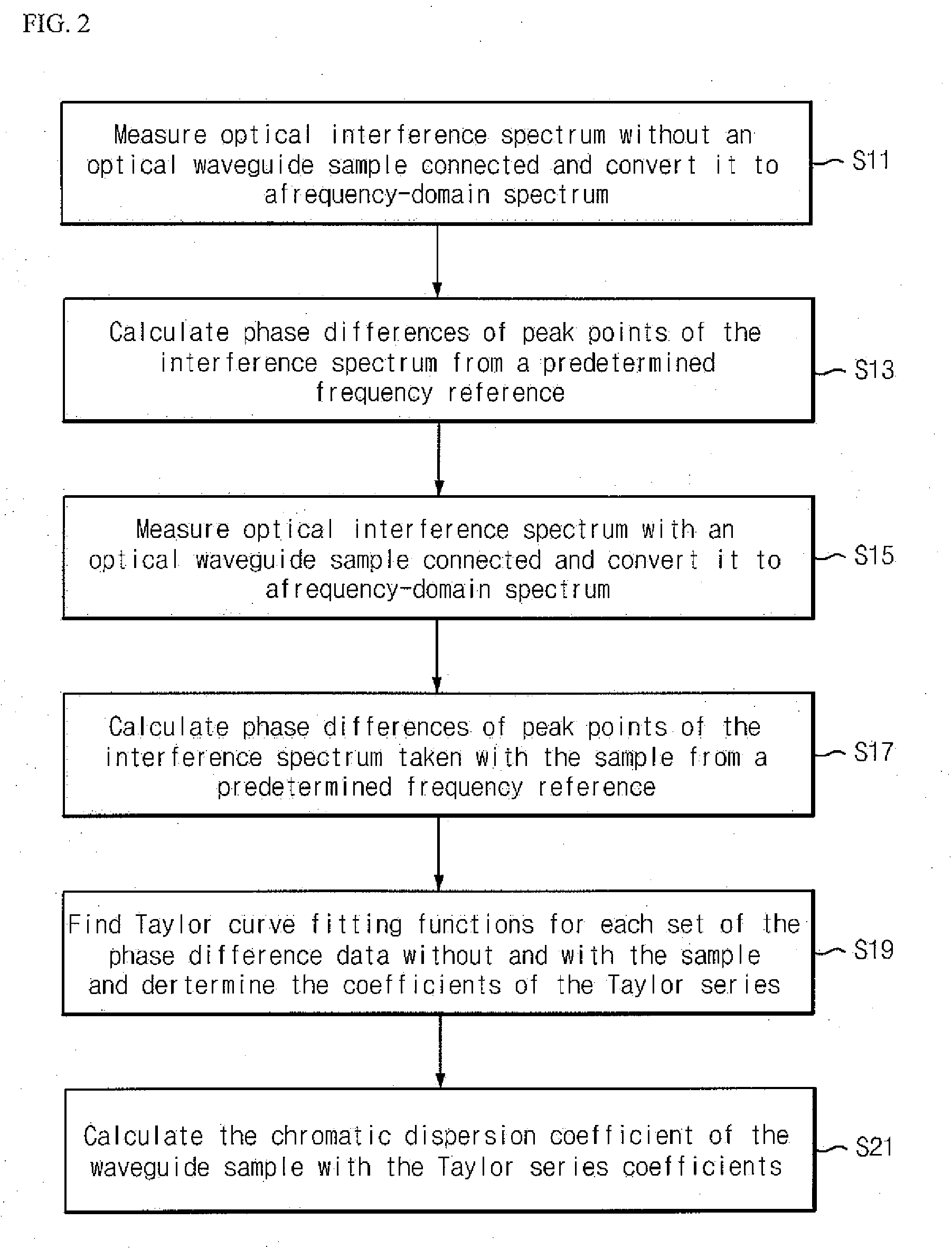Measurement method of chromatic dispersion of optical beam waveguide using interference fringe measurement system
- Summary
- Abstract
- Description
- Claims
- Application Information
AI Technical Summary
Problems solved by technology
Method used
Image
Examples
Embodiment Construction
[0036]Hereinafter, a method of measuring the chromatic dispersion of an optical waveguide using an optical interferometer in accordance with an embodiment of the present invention will be described with reference to the accompanying drawings.
[0037]FIG. 1a and FIG. 1b show brief illustrative diagrams of an optical interference pattern measuring scheme to explain a chromatic dispersion measuring method in accordance with an embodiment of the present invention. In particular, FIG. 1a shows a brief diagram of the interference spectrum measurement scheme with no optical waveguide connected, and FIG. 1b shows a diagram of the interference spectrum measurement scheme with an optical sample waveguide connected. The optical interferometer scheme used in these figures is a Mach-Zehnder interferometer.
[0038]As shown in FIG. 1a and FIG. 1b, the interference pattern measuring system comprises a light source 200, a Mach-Zehnder interferometer 100, and an optical spectrum analyzing apparatus 300.
[...
PUM
 Login to View More
Login to View More Abstract
Description
Claims
Application Information
 Login to View More
Login to View More - R&D
- Intellectual Property
- Life Sciences
- Materials
- Tech Scout
- Unparalleled Data Quality
- Higher Quality Content
- 60% Fewer Hallucinations
Browse by: Latest US Patents, China's latest patents, Technical Efficacy Thesaurus, Application Domain, Technology Topic, Popular Technical Reports.
© 2025 PatSnap. All rights reserved.Legal|Privacy policy|Modern Slavery Act Transparency Statement|Sitemap|About US| Contact US: help@patsnap.com



